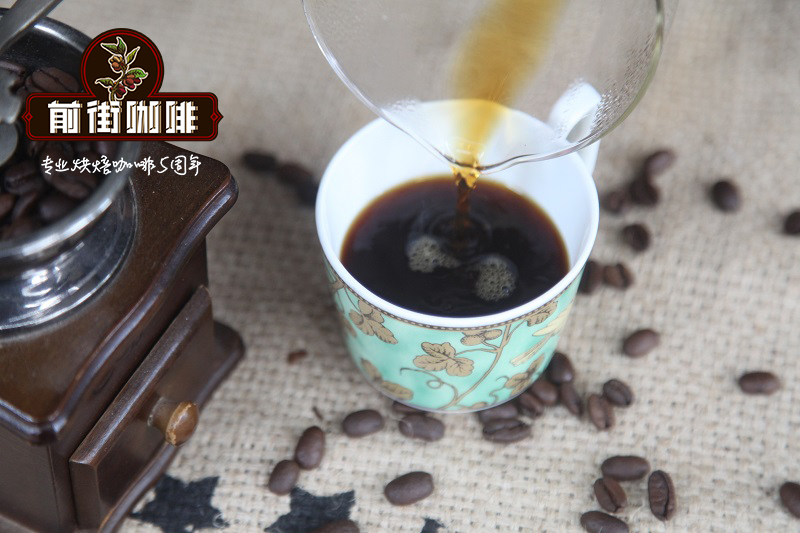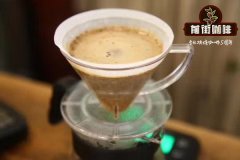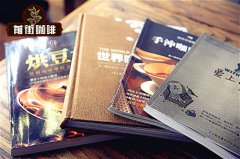Panamanian Rose Summer Coffee Flavor characteristics Feicui Manor Green Standard Rosa Coffee Bean Price

Professional coffee knowledge exchange more coffee bean information please follow the coffee workshop (Wechat official account cafe_style)
Qianjie-Jade Manor rose summer price, ice drop production proportion to share
Panama is near the equator and has a tropical maritime climate. It is humid during the day and cool at night. The annual average temperature is 23-27C °. The whole year is divided into two seasons of drought and rain, with an average annual precipitation of 1500mm to 2500mm.
The Boquet district of Chiriqui province of Panama is the most famous for its coffee, as well as Wakan, Santa Clara and Kendra. Other areas include David, Remacimeinto, Bugaba and Tole, where only coffee grown at elevations between 1300 and 1500 meters above sea level is considered special.
The Emerald Manor (La Esmeralda) is located in the Bouquete Mountains of Panama, which has a mild climate, fertile young volcanic soil, appropriate rainfall and changeable micro-climate, which makes the Pokuit Mountains known as the Coffee Land. Therefore, the coffee beans produced in this area are often named after Baru Mountain when they are not well-known.
Panamanian Emerald Manor is a company specializing in the production of boutique coffee, owned by the Peterson family, is a famous award-winning producer of rose summer coffee, set a record for the highest price of coffee sold at auction in 2004, and has won a large number of coffee industry awards and set several online coffee auction price records. In 2007, the International famous Bean Cup Test sponsored by the American Fine Coffee Association (SCAA) won the championship again, and the bidding price was sold at US $130 per pound, setting a record for the highest price in the history of competition beans.
Among them, the red bid is the highest, and the red bid is the bidding grade coffee beans of the Jadeite Manor. Only by participating in the raw bean bidding meeting held by the Jadeite Manor can we participate in the bidding. And the green standard as the most cost-effective one of the jadeite manor, the pick-up is not low, but it is the choice of many people.
In the front street, there are different ice drops of coffee made every day, and the green label Rose summer ice drops are especially loved by all the fans. So today I would like to share with you the process of making Rose Summer Ice droplets. The reason for choosing rose summer as ice drop coffee is low temperature and slow extraction, dripping for a long time, so that the original flavor of the coffee can be reproduced naturally, and then the taste is clean and smooth through 24H + fermentation. Sometimes the unique flavor of coffee beans will be discovered, which is a very unique way of extraction.
Ice drop coffee is a kind of coffee that takes time to brew. The taste of coffee brewed by choosing different water temperature will be different, and the astringent substance of coffee is not easy to dissolve at low temperature.
At the top of the curling kettle is the place where ice cubes and water are placed, the ratio of ice to water is 1: 1; in the middle is coffee powder: the ratio of coffee powder to ice water mixture is 1: 10, 1: 1: 12.
The bottom pot is the one that collects coffee products.
1 grind the coffee beans with a 2-3 scale grinder.
2 put the filter screen into the bottom of the extraction bottle.
Pour the coffee powder into the extraction bottle and flatten the coffee powder, remember not to push too hard.
4 place the extraction bottle on top of the collection bottle, and then place the drip plate on top of the extraction bottle.
5 prepare ice cubes and filtered pure water and pour into the water storage ball at the ratio of 1:1.
6 turn on the control switch to wet the surface of coffee powder evenly.
7 adjust throttle valve to about 40-60 drops per minute is the most suitable.
Green label Rose summer ice drop coffee can taste very soft and bright acidity and obvious flower and fruit aroma, is a very popular ice drop in the store, only 40 yuan a cup, because the quantity is limited, so it is also in short supply.
Knowledge expansion: the principle of ice-brewed coffee is extracted bit by bit by melting ice on the basis of the compatibility of coffee with water. The coffee extracted has different flavor according to the roasting degree, water quantity, water temperature, droplet speed, grinding thickness and other factors.
END
Important Notice :
前街咖啡 FrontStreet Coffee has moved to new addredd:
FrontStreet Coffee Address: 315,Donghua East Road,GuangZhou
Tel:020 38364473
- Prev

The characteristics of Java coffee beans how to handle Java coffee how about java Java coffee
Professional coffee knowledge exchange more coffee bean information please follow the coffee workshop (Wechat official account cafe_style) Arabica coffee was introduced to Java in 1699 and exported to Europe 12 years later in 1711. For the next 150 years, the harvest was good until coffee rust first hit the area in 1878. The Dutch grow Arabica at a higher altitude
- Next

What's so special about the taste of Rosa coffee? share the taste of Rose Xia Shouchong.
Professional coffee knowledge exchange more coffee bean information please pay attention to the coffee workshop (Wechat official account cafe_style) front street-jadeite manor green rose proportion sharing rose summer (Geisha), a subspecies of coffee, belongs to Arabica species, rich jasmine, light citric acid, roasted sweet potato, bergamot, white grape and other flavors, make it very tasteful, in recent years, boutique coffee industry
Related
- Beginners will see the "Coffee pull flower" guide!
- What is the difference between ice blog purified milk and ordinary milk coffee?
- Why is the Philippines the largest producer of crops in Liberia?
- For coffee extraction, should the fine powder be retained?
- How does extracted espresso fill pressed powder? How much strength does it take to press the powder?
- How to make jasmine cold extract coffee? Is the jasmine + latte good?
- Will this little toy really make the coffee taste better? How does Lily Drip affect coffee extraction?
- Will the action of slapping the filter cup also affect coffee extraction?
- What's the difference between powder-to-water ratio and powder-to-liquid ratio?
- What is the Ethiopian local species? What does it have to do with Heirloom native species?

